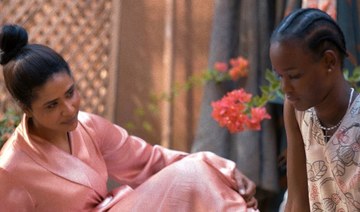YANBU: The Royal Commission in Yanbu hosted the first Regional Convention for Learning Cities at the King Fahd Cultural Center in Yanbu Industrial City, aiming to promote comprehensive lifelong learning in Arab cities and strengthen their efforts toward achieving Sustainable Development Goals.
The two-day convention, which ended on Thursday, was organized by the Arab Bureau of Education for the Gulf States in partnership with the UNESCO Institute for Lifelong Learning.
This comes after UNESCO announced the adoption of Yanbu Industrial City as an international learning city last year. It is the second city to hold this title in the Kingdom, after Jubail Industrial City, which was approved in 2020 within the global network of learning cities.
The RCY said the decision came thanks to the quality of education in the Kingdom, its commitment to providing lifelong learning for all, and its introduction of policies that promote comprehensive and sustainable development in a way that contributes to achieving the goals of the Saudi Ministry of Education in preparing and qualifying globally competitive citizens, in accordance with the goals of sustainable development and Saudi Vision 2030.
The network also works to improve lifelong learning practices in cities around the world by promoting policy dialogue and peer learning among member cities, strengthening interdependence and partnerships, providing capacity development, and developing tools and means to motivate and realize the progress made in building learning cities.
SAMREF, one of the major companies in Yanbu Industrial City and a pioneer in social work in the region, was a success partner for the convention. Its contributions in the education sector since 2008 have exceeded SR10 million ($2.7 million).
The company also equipped model classrooms, computer laboratories, and provided English courses and classes for people with learning difficulties, in addition to providing training and educational programs.
Royal Commission for Jubail and Yanbu President Khalid bin Mohammed Al-Salem in his opening remarks welcomed participants.
Abdulrahman Al-Asimi, director-general of the Arab Bureau of Education for the Gulf States, and Abdulhadi bin Abdulrahman Al-Juhani, CEO of the RCY, inaugurated the sessions of the convention.
A short video about the industrial city of Yanbu, and a tribute to the RCY by the Arab Bureau of Education for the Gulf States was presented.
The first session on the UNESCO Global Network of Learning Cities began by defining what the learning city is. The second session included a dialogue for heads of cities to discuss regional trends in learning cities in Arab countries. The third session tackled local sustainable solutions on education about climate change. The fourth session covered ways to coordinate lifelong learning in cities and communities to ensure gender equality in learning.
The fifth session contemplated the impact of lifelong learning in cities for an inclusive economy, in light of the continuous change in the skills and competencies required in jobs, the role that learning cities can play in building a competitive workforce, and the sixth session covered the role of technology and artificial intelligence in promoting lifelong learning in cities, where artificial intelligence and digital technologies are key to building a smart city for learning.
Use of technology played a key role in cities during the global pandemic to support the continuity of learning and to better understand the potential of artificial intelligence in learning.
The session also debated the advantages and challenges of implementing artificial intelligence to enhance lifelong learning in learning cities.


























